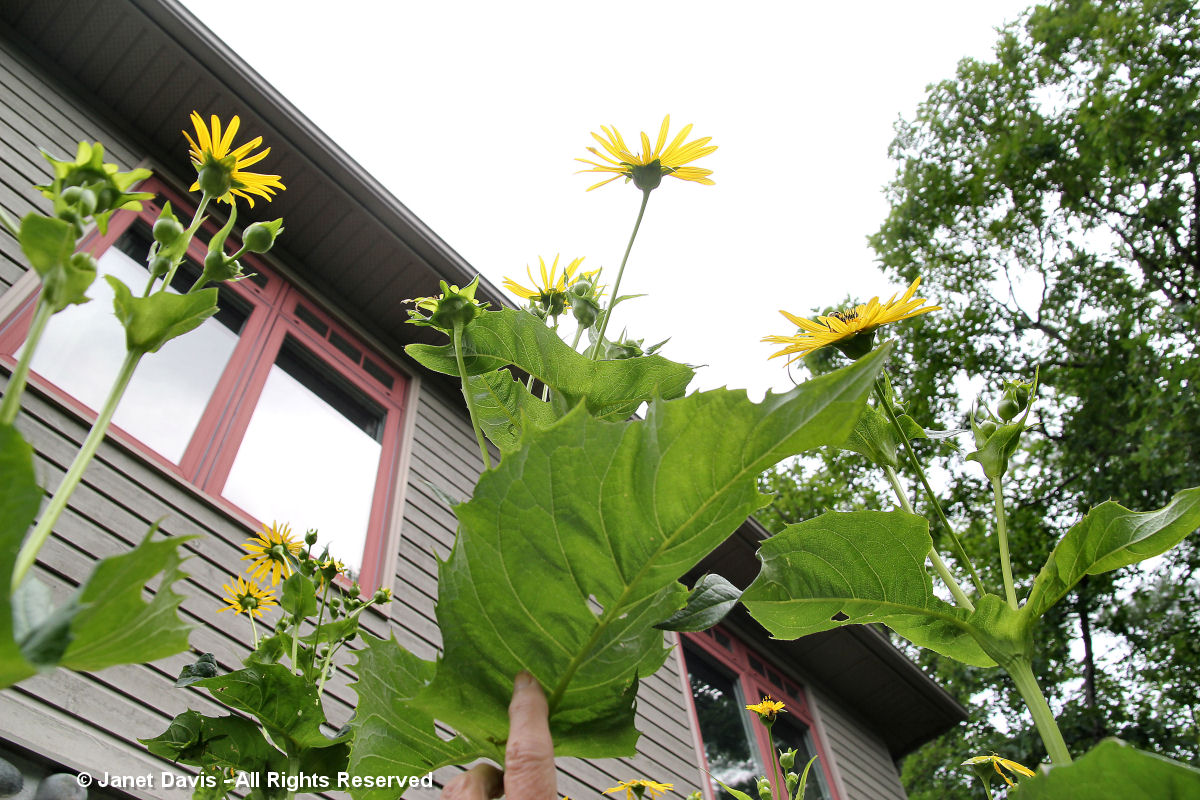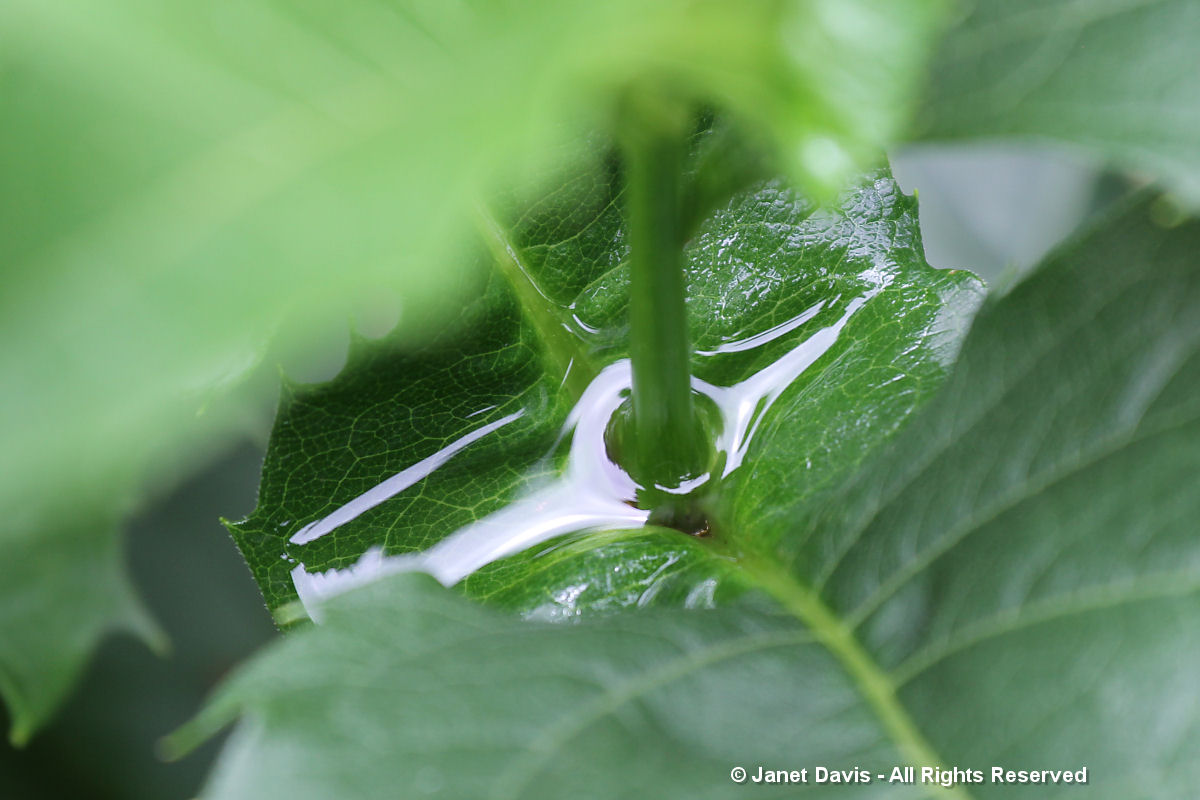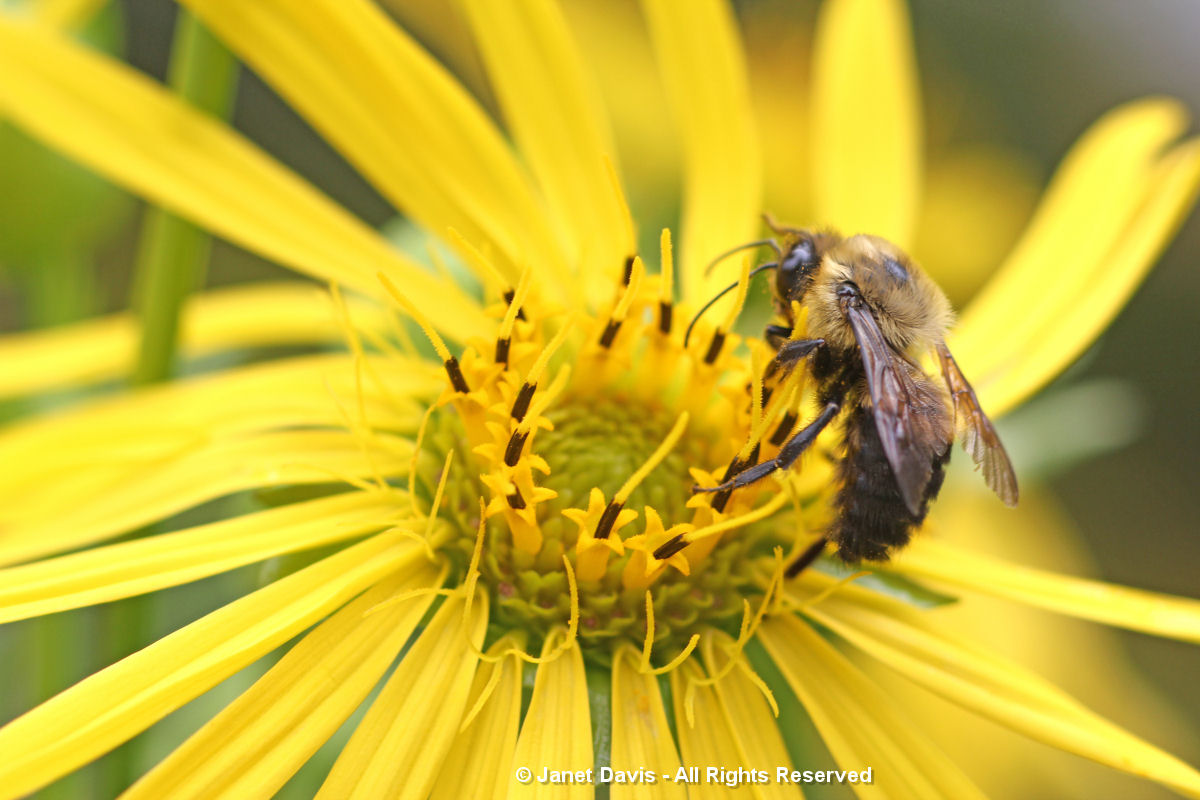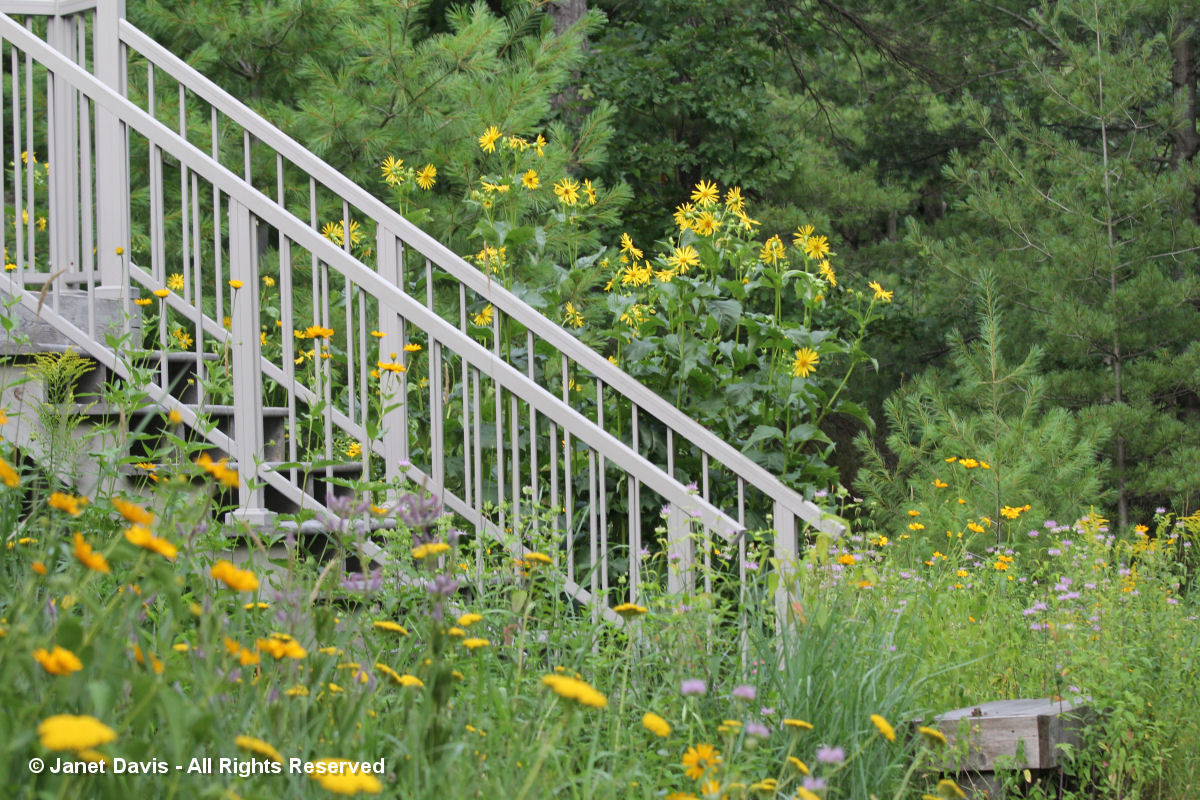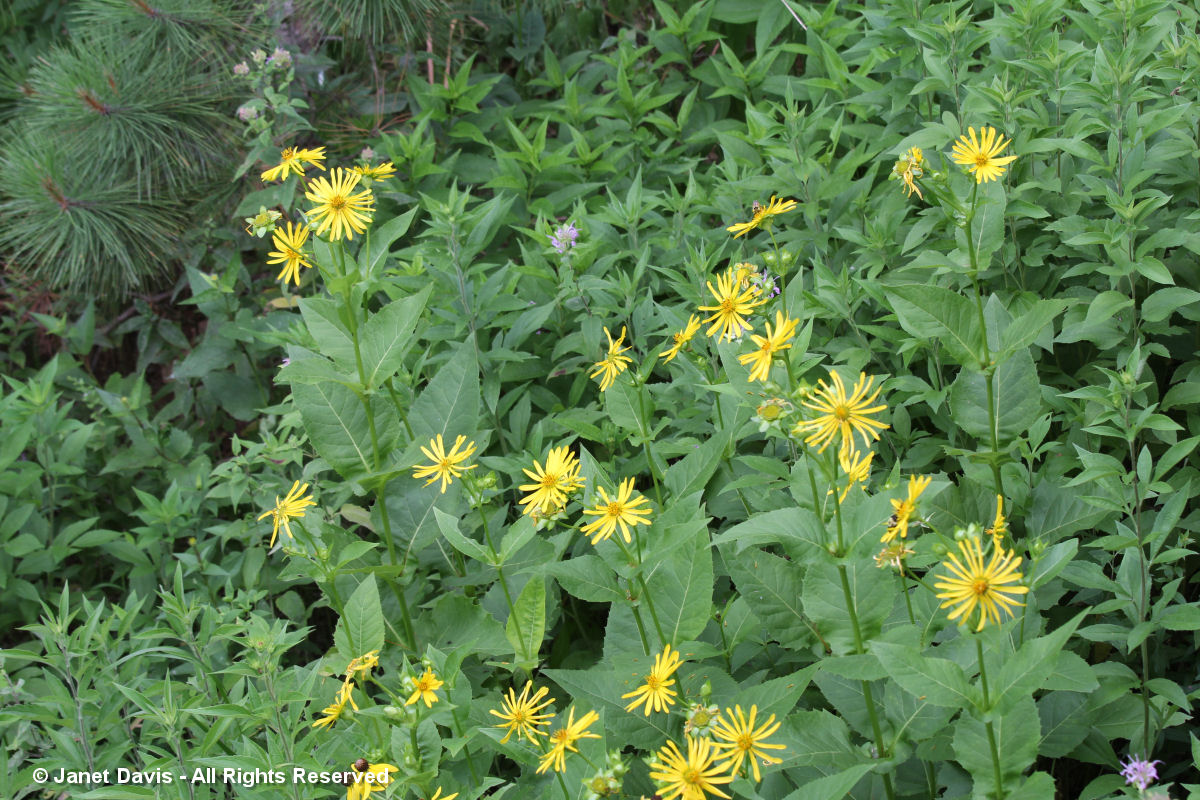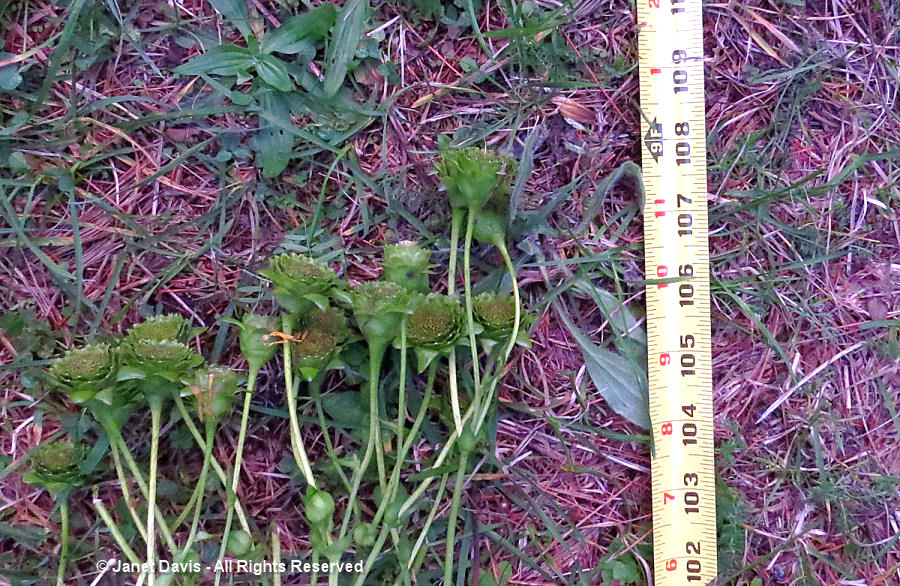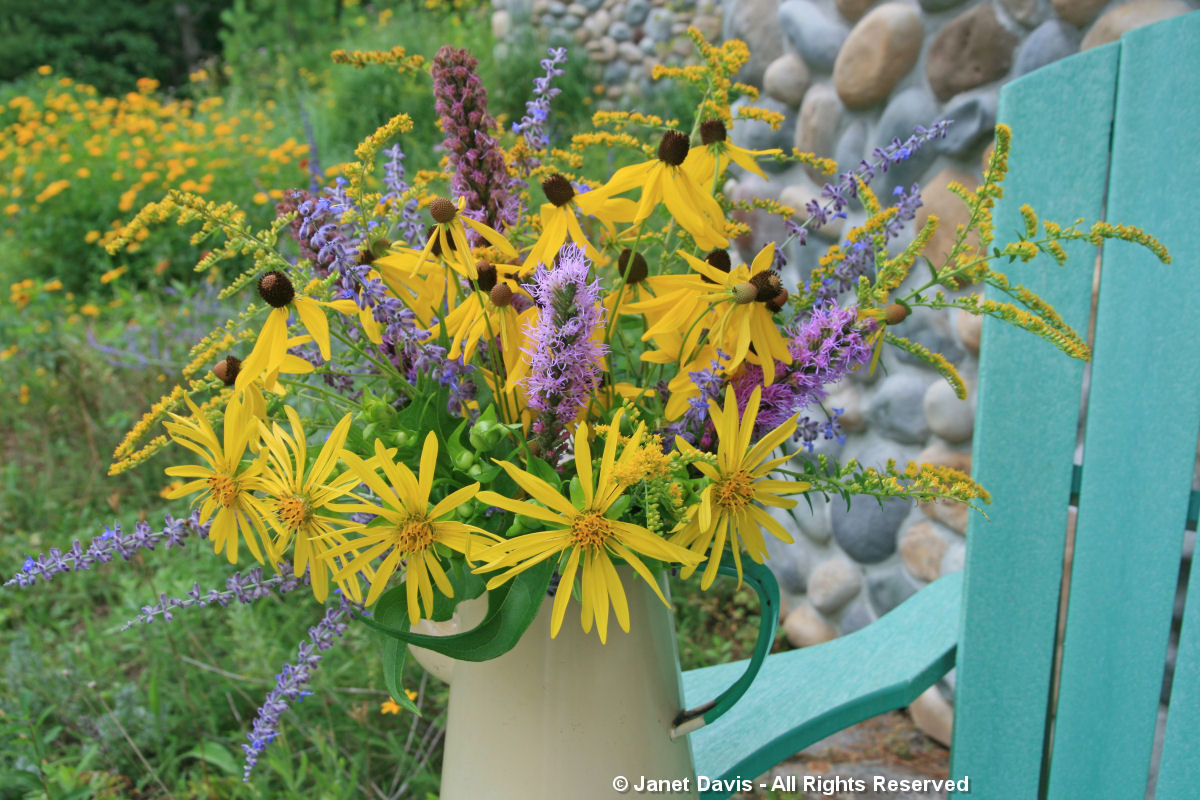(Hmmm. I just re-read my title and almost changed it, but decided not to. Snicker away – I’m going with “cups”.)
My second yellow-gold blog for July (the first was on companion plants for blackeyed susans) honours another composite prairie perennial that has pride of place in my meadows at Lake Muskoka. Cup plant or Indian cup (Silphium perfoliatum) gets both its common name and Latin specific epithet from the way the leaves encircle the stem, thus making the stem appear to pierce the foliage – i.e. a ‘perfoliate’ habit.
This clasping leaf arrangement creates a kind of ‘cup’ in which water can collect after rains, supposedly providing drinking water for birds and insects. Alas, insects are often found floating in the water, with some experts suggesting that it may actually act as a deterrent against insect pests that might climb up the stem.
While it is a fabulous native, indigenous to moist woods and prairies in much of mid and east North America, including my province Ontario, its tendency to colonize makes it problematic. In fact, though it is classified as “threatened and endangered”in Michigan, it is “potentially invasive” and banned for sale in Connecticut. I received my fleshy roots from the compost bins of Toronto’s beautiful Spadina House gardens, and the gardeners gave me fair warning that it was invasive, and hard to dig up to control its spread. So I don’t; I merely enjoy it and give thanks for it when the bumble bees are nectaring on the big yellow flowers.
Here are bumble bees in action, along with a surprise visitor for whom those itty-bitty leaf pools are no deterrent, when tasty cup plant seedheads are the rewards for ascending that thick stem.
Honey bees love cup plant as well. There are no apiaries near my cottage on Lake Muskoka, but I photographed this one in the meadows at Miriam Goldberger’s Wildflower Farm an hour so south.
Butterflies like the monarch enjoy cup plant, too.
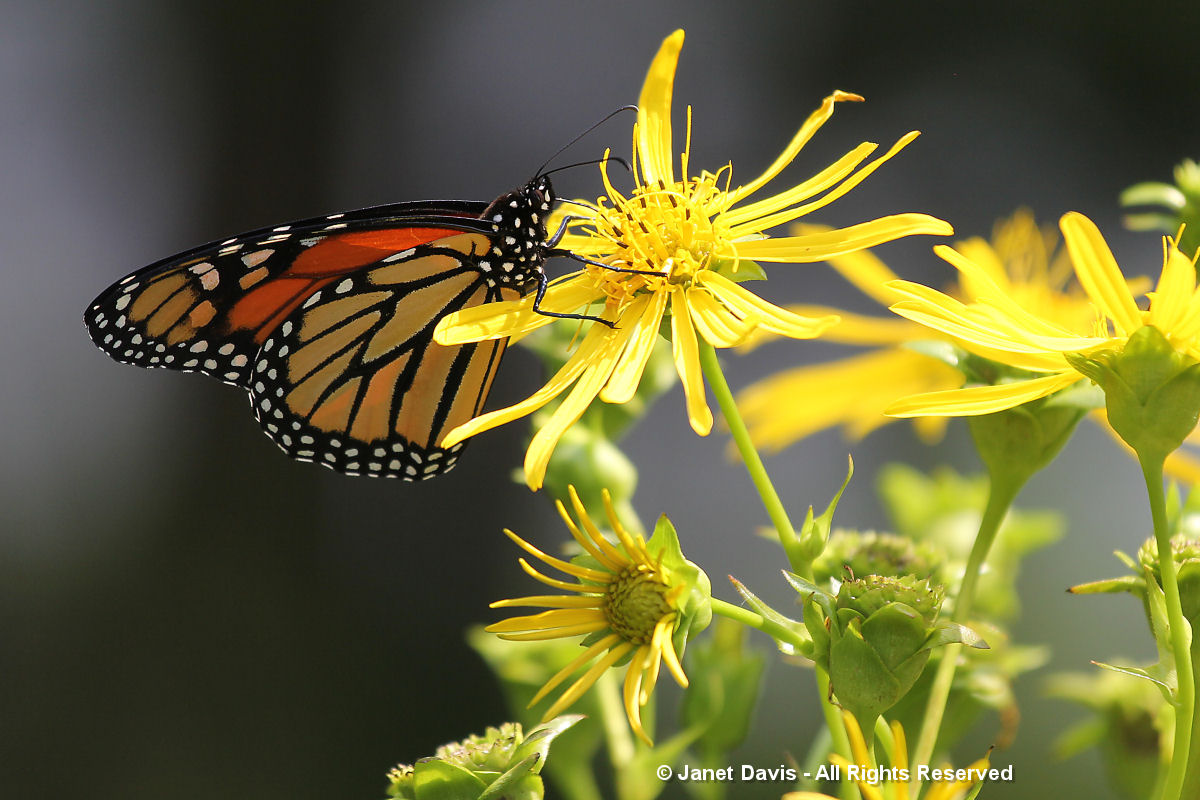
I grow cup plants near my stairs so I can photograph the pollinators at eye level.
But they’re in my meadows as well. Though they prefer adqequate moisture in the soil, they are surprisingly drought-tolerant (as they’ve had to be this hot, dry summer), but will develop yellow leaves and stunted flowers in time. Here’s a colony below my bedroom window amidst sweet blackeyed susans (Rudbeckia subtomentosa) still to come into flower.
They make good companions to gray-headed coneflowers (Ratibida pinnata), which bloom at the same time.
They are easily the tallest perennials I grow. Last summer (a season of good rains), I lay down the loftiest stems so I could do a measurement. Yes, 9 feet.
I leave you with a little narrated tour…..
….and a cottage bouquet showing cup plant flowers in the bottom tier, surrounded by summer flowers like ratibida, perovskia, liatris and goldenrod. Yellow/gold for July 2016, over and out.

